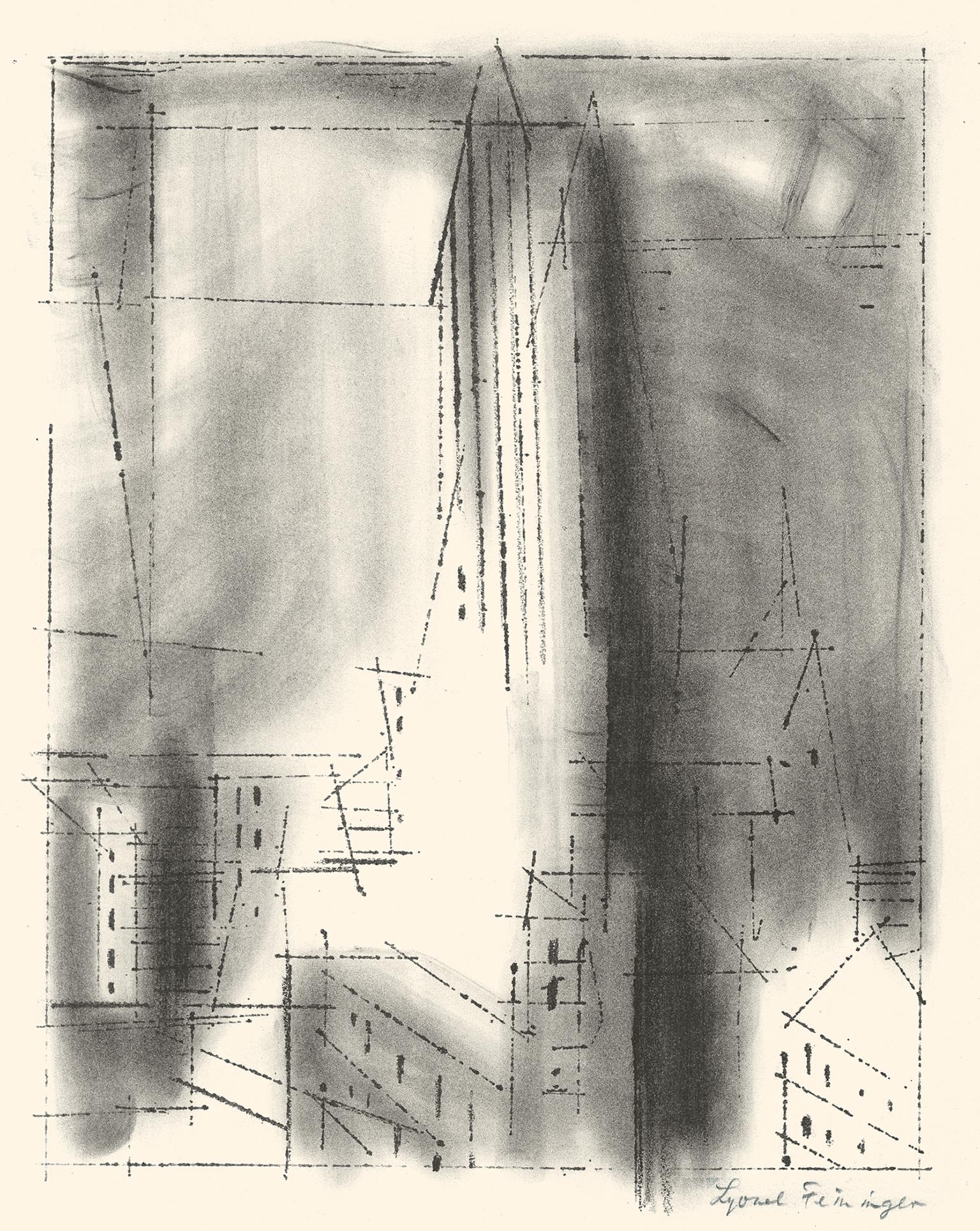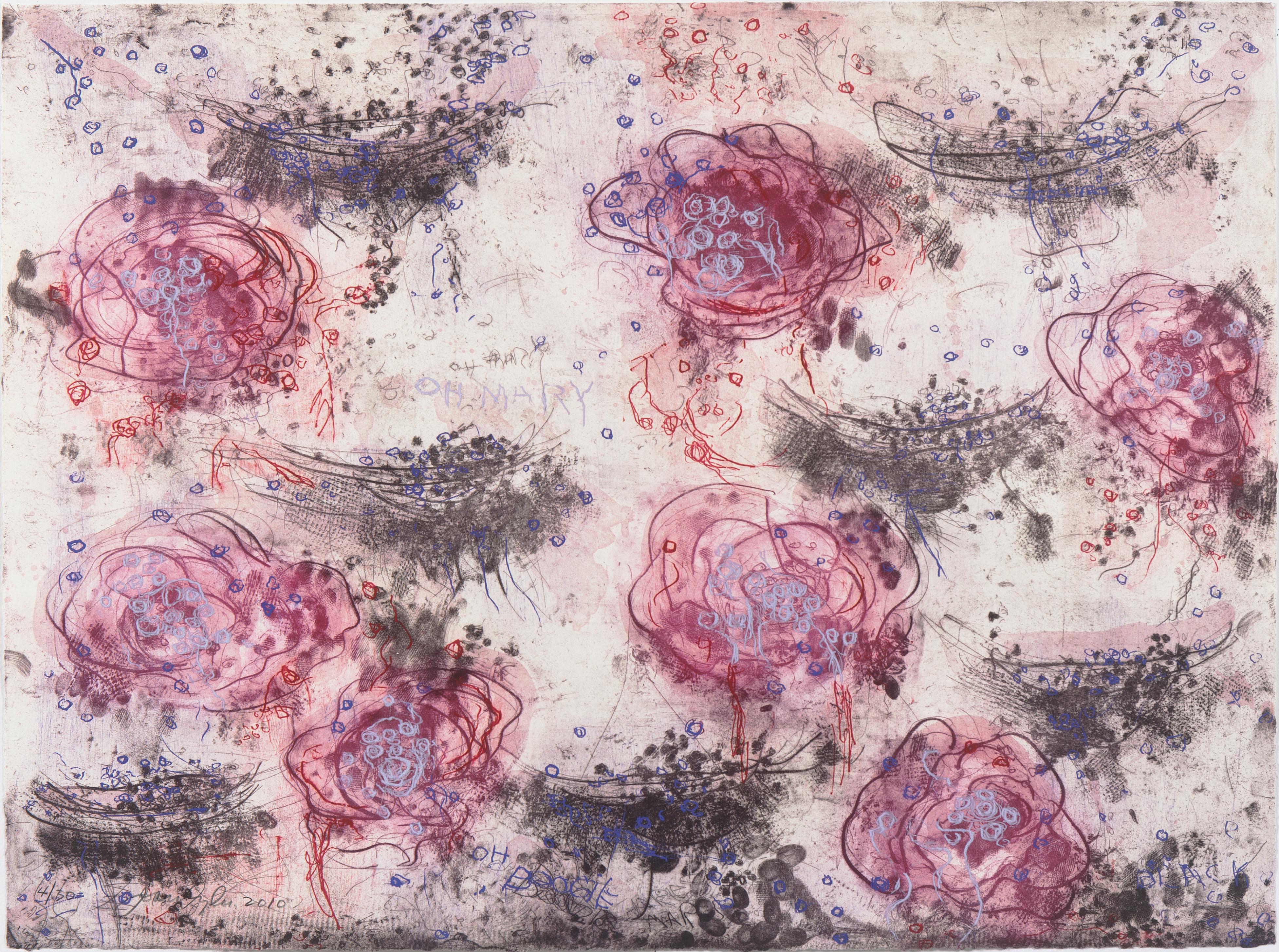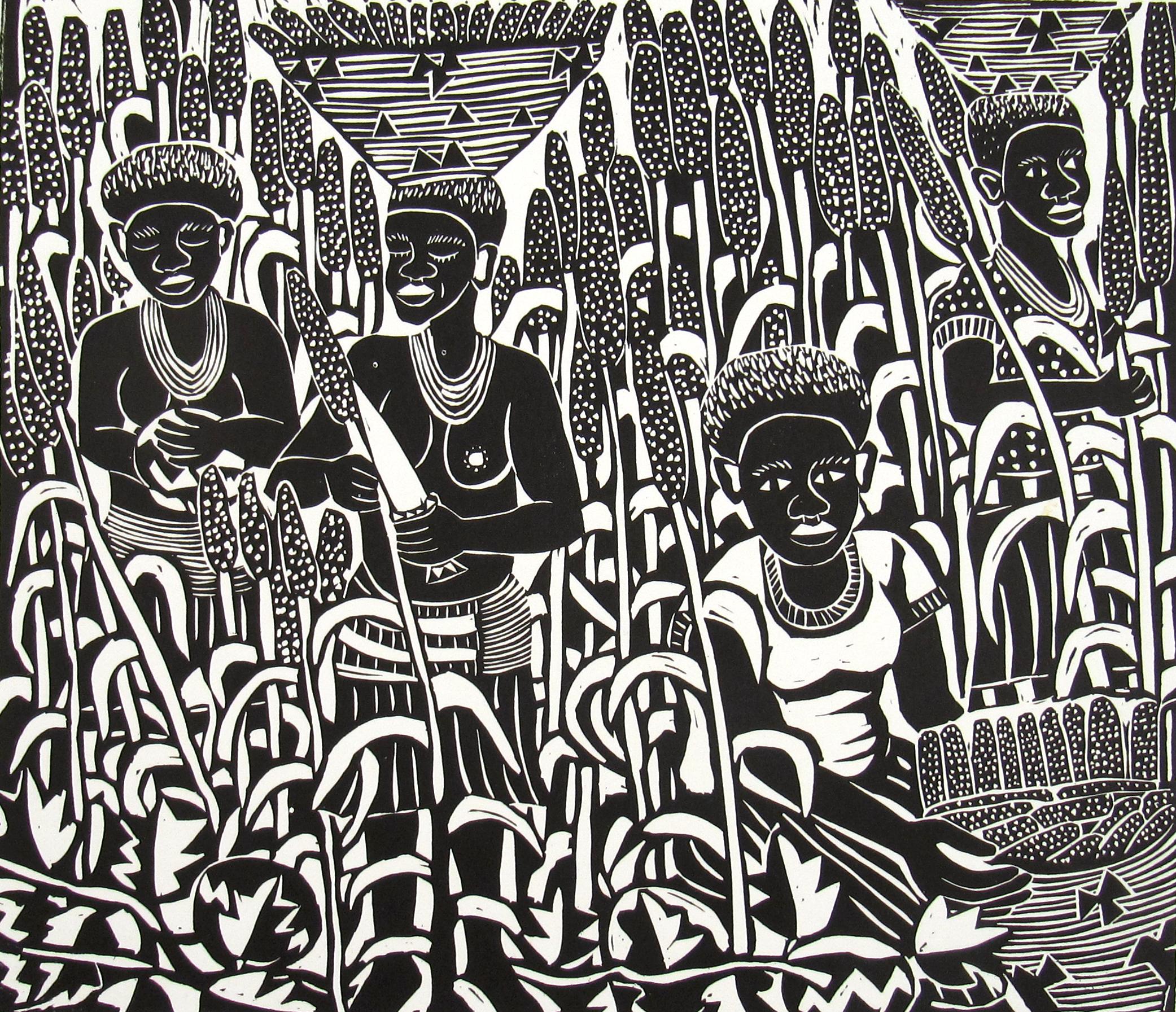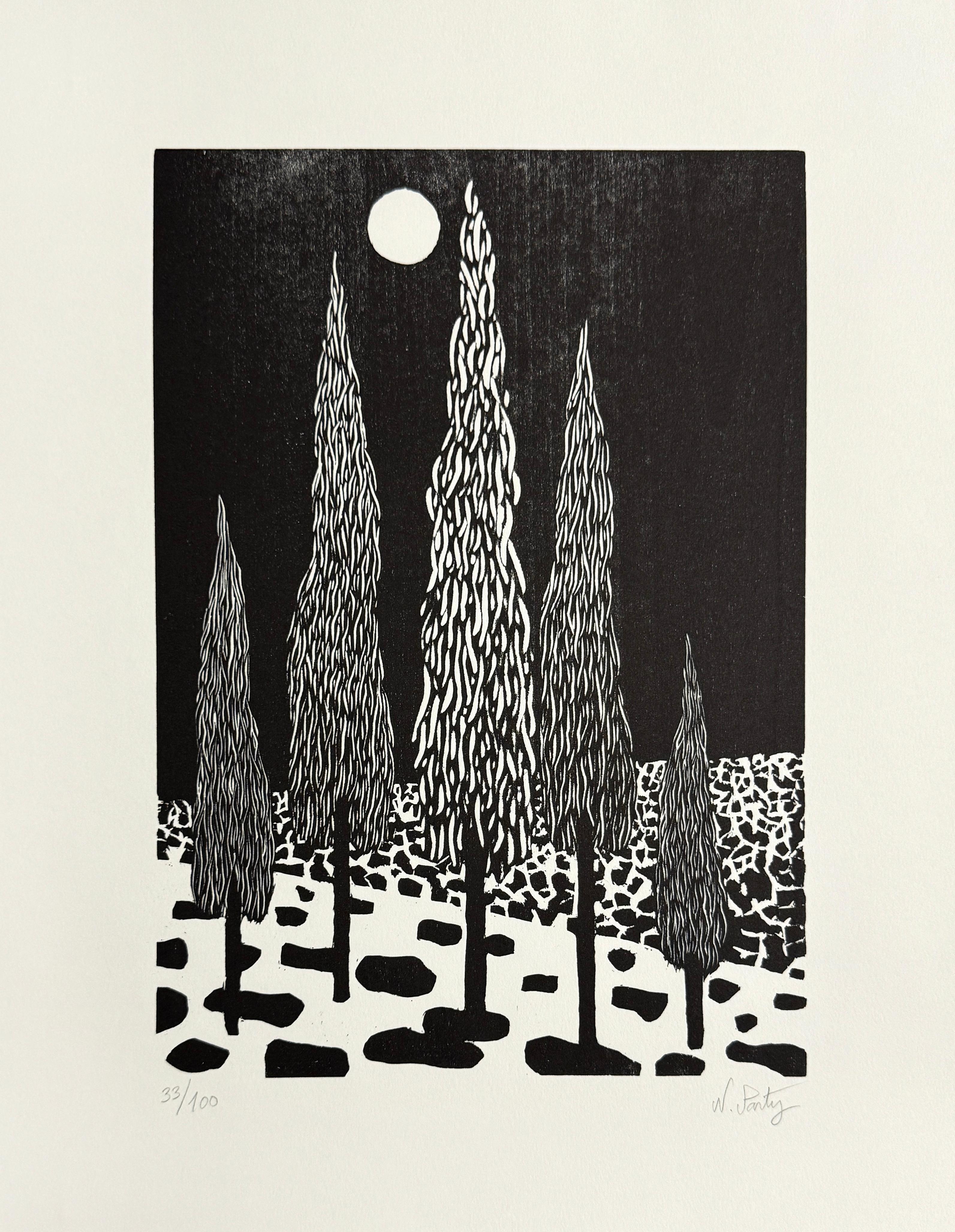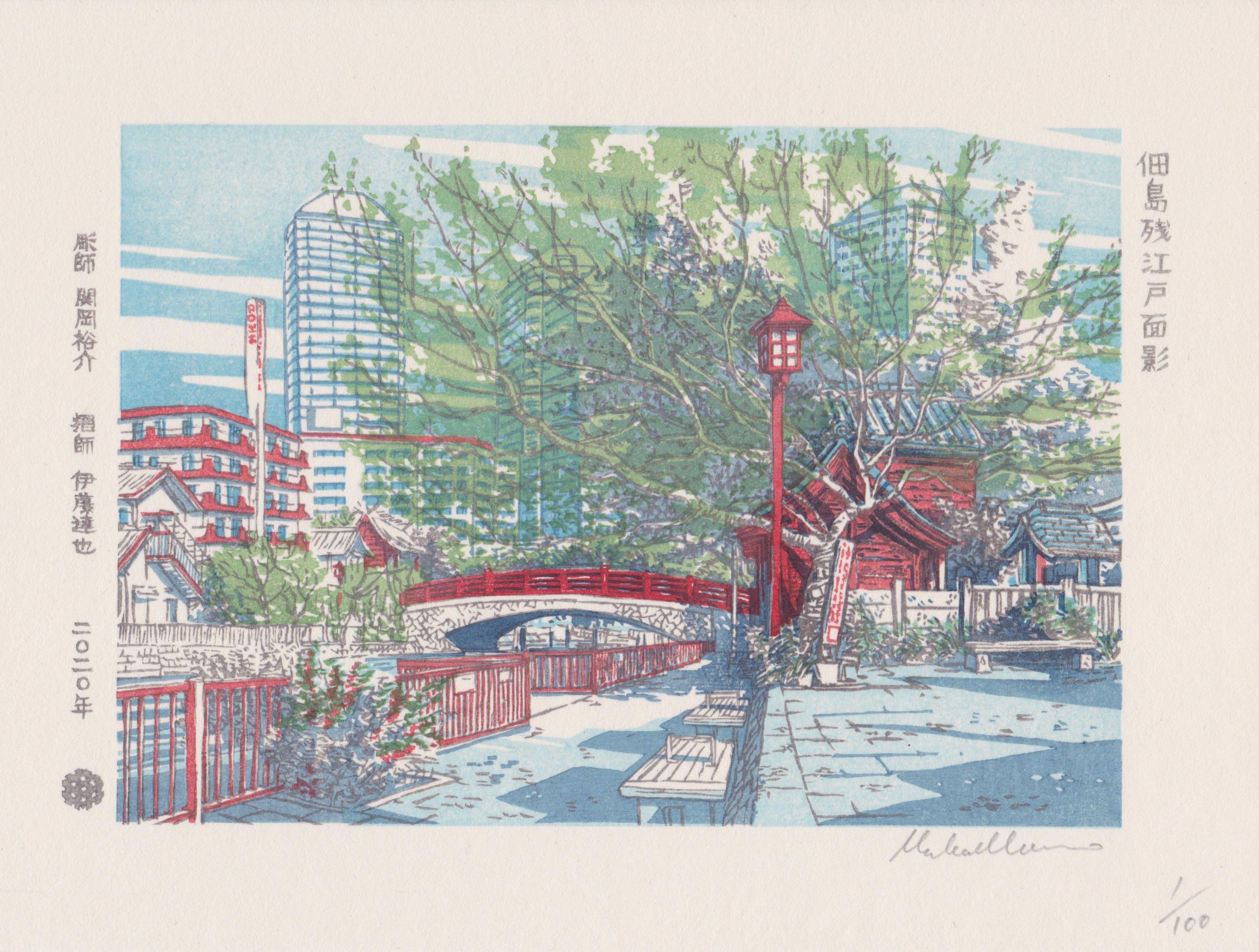Items Similar to Kreuzende Segelschiffe 2 (Cruising Sailing Ships 2)
Want more images or videos?
Request additional images or videos from the seller
1 of 2
Lyonel FeiningerKreuzende Segelschiffe 2 (Cruising Sailing Ships 2)1919
1919
About the Item
Lyonel Feininger, “Kreuzende Segelschiffe 2 (Cruising Sailing Ships 2)”
1919, Woodcut.
Prasse W175. Edition 275 unsigned for portfolio Die tunlte Jahresgabe des Kreises graphischer Kunstler und Sammier, 1925; 25 signed de luxe edition nos. I-XXV, on Japanese Milo paper; 150 signed edition nos. 1-150, on Zanders cream laid paper; 100 unsigned nos. 151-250. Signed and titled in pencil.Image size 6 x 8 7/8 inches (171 x 225 mm); sheet size 9 1/2 x 11 7/8 inches (241 x 302 mm).
A superb, black, proof impression, apart from the published editions, on tissue-thin cream laid Japan, with full margins ( 7/8 to 1 5/8 inches, slight toning toward edges), in excellent condition.
Feininger estate stamp in the bottom right sheet corner.
This print was also titled by the artist Segler, Segel-Schiffe, Kreuzende Schiffe (and that’s the title he used in this impression), and Ships.
Prasse notes that there were proofs made on carbon copy paper and Kozo and other Japanese laid paper (the latter two types were Feininger’s favorite papers).Collections: Altenburg, Braunschweig; Bremen; Cincinnati CIAM (proof); Cleveland CMA (proof); Darmstadt BA (proof); Dresden (185/250); Essen; Kaiserslautern (11/150); Karlsruhe (XIV/XXV0); Leipzig MdbK (24/150); Philadelphia PMA; Tel Aviv; Trenton (proof); Washington NGA; Zwickau.
- Creator:Lyonel Feininger (1871-1956, American)
- Creation Year:1919
- Medium:
- Movement & Style:
- Period:
- Condition:
- Gallery Location:New York, NY
- Reference Number:1stDibs: LU51531591763
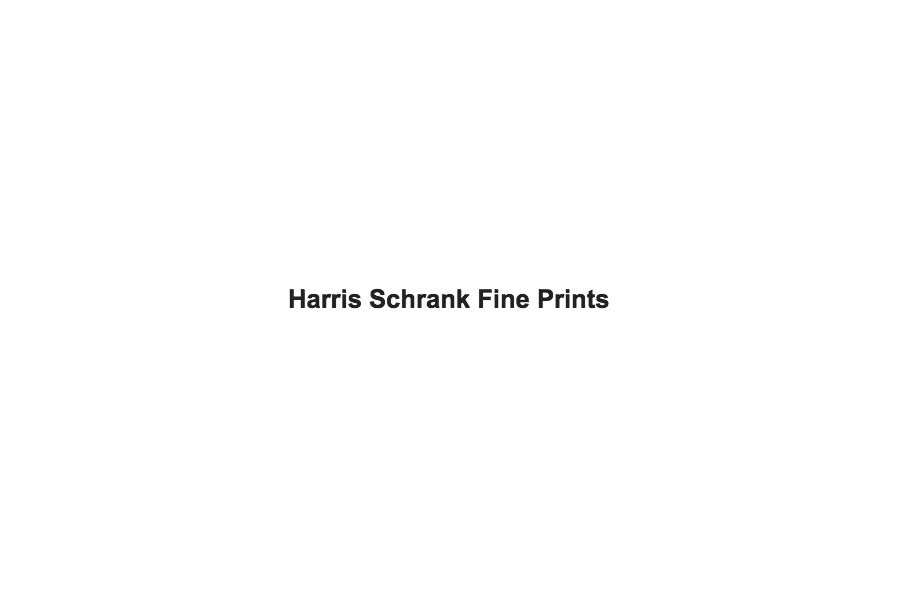
About the Seller
4.9
Recognized Seller
These prestigious sellers are industry leaders and represent the highest echelon for item quality and design.
Established in 2000
1stDibs seller since 2016
99 sales on 1stDibs
Typical response time: 3 hours
Associations
International Fine Print Dealers Association
- ShippingRetrieving quote...Ships From: New York, NY
- Return PolicyA return for this item may be initiated within 7 days of delivery.
More From This SellerView All
- Chrysler Building (Chrysler Building in Construction)By Howard Norton CookLocated in New York, NYHoward Cook (1901-1980), Chrysler Building (Chrysler Building in Construction) – –1930, Wood Engraving. Duffy 122. Edition 75, only 50 printed. 19...Category
1930s American Modern Landscape Prints
MaterialsWoodcut
- Eight-thirty ExpressBy Letterio CalapaiLocated in New York, NYLetterio Calapai (1902-1993), Eight-Thirty Express, wood engraving, 1943, signed and dated ’43 lower right, titled and inscribed trial proof 3 bottom left in pencil [with the monogra...Category
1940s American Modern Landscape Prints
MaterialsEngraving, Woodcut
- Farm in the WoodsBy Werner DrewesLocated in New York, NYWerner Drewes (1899-1983), Farm in the Woods, woodcut, 1933, signed and dated in pencil lower right (also numbered 1-xxx and titled lower left). Reference: Rose 83. In very good cond...Category
1930s American Realist Landscape Prints
MaterialsWoodcut
- Coin de Rue Dans SohoBy Jean-Emile LaboureurLocated in New York, NYJean-Emile Laboureur (1877-1947), Coin de Rue Dans Soho, woodcut, 1909, signed in pencil lower left and numbered (15/15) [also initials in the plate]. Reference: Sylvain Laboureur 64...Category
Early 1900s Modern Landscape Prints
MaterialsWoodcut
- The Avon on the Road to BexhillBy Theodore Casimir RousselLocated in New York, NYTheodore Roussel (1847-1926), The Avon on the Road to Bexhill, drypoint, 1919, signed in pencil and dated (15.7.19) lower left [also signed in the plate]. Reference: Hausberg 115, f...Category
1910s Impressionist Landscape Prints
MaterialsDrypoint
- Paysage au Buttes-Chaumont (2nd Planche), 1920-21By Jean-Emile LaboureurLocated in New York, NYJean-Emile Laboureur (1877-1943) etching and engraving Paysage au Buttes-Chaumont (2nd Planche), 1920-21, signed and numbered ( 38/55) in pencil. Reference: Sylvain Laboureur 205. In very good condition with wide margins (remains of old hinging on margin verso, some showing through not near image). On white wove paper, 7 7/8 x 9 1/4, the sheet 10 x 13 1/2 inches, archival matting. A fine, fresh and clear impression of this important cubist-influenced scene. Jean-Emile Laboureur was born in Nantes in 1877. He traveled to Paris in 1895 intending to study law at the Sorbonne, but found himself drawn to the nearby famed Academie Julian, and although he never officially matriculated there, he became immersed in the Parisian art scene. Laboureur then traveled widely, staying for periods in the US and London, and studying classic art and printmaking in Italy and Germany. Although he had moved back to Paris by 1910, a time when analytical cubism was emerging in the work of Picasso and Braque, he continued working in an abstract, modernist mode, waiting until about 1913 or shortly thereafter to invent a cubist idiom all his own. Cubism remained an important theme for Laboureur, a theme he varied, sometimes using it as a strong design or compositional component, sometimes only as a subtle background element. In Paysage aux Buttes...Category
1920s Cubist Landscape Prints
MaterialsEngraving, Etching
You May Also Like
- Insel, 1933By Lyonel FeiningerLocated in Kansas City, MOLyonel Feininger (after) Insel, 1933 Collotype, watercolor Size: 11.5x17in on 17.5x22in Esther Gentle, Reproduction, 1952 Signed, titled and dated in the stone Stamped and numbered b...Category
1930s Bauhaus Prints and Multiples
MaterialsWatercolor, Color
- 'Manhattan 1, stone 2' — New York City, Mid-Century ModernismBy Lyonel FeiningerLocated in Myrtle Beach, SCLyonel Feininger, 'Manhattan 1, stone 2', lithograph, 1951, edition 25. Prasse L 16. Titled 'Manhattan I and Stone II' in pencil, in the bottom right sheet edge. A fine impression on off-white Rives wove paper, with full margins (1 1/2 to 2 3/4 inches), in excellent condition. Scarce. Image size 11 1/4 x 8 5/8 inches (286 x 219 mm); 16 x 11 1/2 sheet size: inches (406 x 292 mm). Matted to museum standards, unframed. ABOUT THIS WORK Feininger produced only 20 lithographs throughout his prolific career—a handful of much earlier works created from 1906-12 were never editioned, with only a few proofs providing a record of those formative experiments. The success of his signature work, 'Off the Coast, Stone 3' created in 1951 for the Print Club of Cleveland, led the artist to produce five other lithographs from 1951-1955 printed by master lithographer George C. Miller as was the Print Club edition. Impressions of this work are held in the collections of the Boston Public Library, Cambridge Fine Arts Museum, Cleveland Museum of Art, Bezalel National Art Museum (Jerusalem), Philadelphia Museum of Art, and the Washington Library of Congress. ABOUT THE ARTIST Lyonel Feininger (1871-1956) was born in New York City into a musical family—his father was a violinist and composer, his mother was a singer and pianist. He studied violin with his father, and by the age of 12, he was performing in public. Still, he also drew incessantly, most notably the steamboats and sailing ships on the Hudson and East Rivers, and the landscape around Sharon, Conn., where he spent time on a farm owned by a family friend. At the age of 16 he left New York to study music and art in Germany, from where his parents emigrated. Drawn more to the visual arts, he attended schools in Hamburg, Berlin, and Paris from 1887 to 1892. After completing his studies, Feininger began his artistic career as a cartoonist and illustrator, his originality leading him to great success. In 1906, after working for a dozen years in Germany, he was offered a job as a cartoonist at the Chicago Tribune, the largest circulation newspaper in the Midwest. He worked there for a year, inventing what became the standard design for the comic strip: in the words of John Carlin, “an overall pattern. . . that allowed the page to be read both as a series of elements one after the other, like language and as a group of juxtaposed images, like visual art.” His originality did not end there: he went on to become one of the great abstract painters. Like Kandinsky, music was his model, but Kandinsky only knew music from the outside—as a listener (inspired initially by Wagner, then by Schoenberg)—while Feininger knew it from the inside. He lived in Paris from 1906 to 1908, during which time he met and was influenced by the work of progressive painters Robert Delaunay and Jules Pascin, as well as that of Paul Cezanne and Vincent van Gogh. He began painting full-time, developing his distinctive Iyrical style based on Cubist and Expressionist idioms and a concern for the emotive qualities of light and color. He exhibited with the Der Blaue Reiter group in 1913, and in 1917, he had his first solo exhibition at Galerie Der Sturm in Berlin. One year after his solo exhibition, in 1918, Feininger began making woodcuts. He became enamored with the medium, producing an impressive 117 in his first year of exploring the printmaking medium. In 1919 at the invitation of the architect Walter Gropius, he was appointed the first master at the newly formed Staatliches Bauhaus in Weimar. His woodcut of a cathedral...Category
1950s Bauhaus Landscape Prints
MaterialsLithograph
- Wild RosesBy Joan SnyderLocated in Brooklyn, NYWild Roses, 2010 Lithograph/etching/woodcut 28 3/8 × 38 3/8 in 72.1 × 97.5 cm This print combines etching, lithography, and woodcut to create a great variet...Category
2010s Contemporary Landscape Prints
MaterialsEtching, Lithograph, Woodcut
- Elia Shiwoohamba ( Namibia, 1981 ) Harvesting Time Lino Cut African School 2006By Elia ShiwoohamaLocated in Meinisberg, CHElia Shiwoohamba (* 1981 , Windhoek, Namibia ) Harvesting Time • African School • Linoleum cut • Sheet ca. 34.5 x 43 cm (Image is smaller) • Bottom left numbered 8/50 and titled • ...Category
Early 2000s Expressionist Landscape Prints
MaterialsPaper, Linocut, Woodcut
- TreesBy Nicolas PartyLocated in London, GBWoodcut on BFK Rives paper, produced in 2020. Edition of 100. Mint condition, unframed. Signed and numbered in pencil by Nicolas Party.Category
2010s Contemporary Landscape Prints
MaterialsWoodcut
- Vestiges of Edo in Tsukuda - SummerLocated in Koto-Ku, 13About Vestiges of Edo in Tsukuda (Tsukuda ni Nokoru Edo no Omokage) Artist: URBANOWICZ Mateusz Woodcarver: SEKIOKA Senrei III Printer: ITO Tatsuya Year: 2020 Our first original landscape ukiyo-e depicting Tsukuda, a neighborhood next to Tsukishima station in the east of Tokyo. This artwork highlights the striking contrast between the modern architecture and historical elements, that co-exist in harmony in Tsukuda today. The Japanese title Tsukuda ni Nokoru Edo no Omokage translates to “the vestiges of Edo in Tsukuda” - the word omokage (vestige) refers to the river, an aspect of old Edo that has continued to exist to this day, despite the fact that other things may have evolved or disappeared with time. When we trace back the history of ukiyo-e, we can see that there have been many foreign ukiyo-e artists who created important shin-hanga works in the 20th century, such as Paul Jacoulet, Elizabeth Keith...Category
2010s Edo Landscape Prints
MaterialsWoodcut

